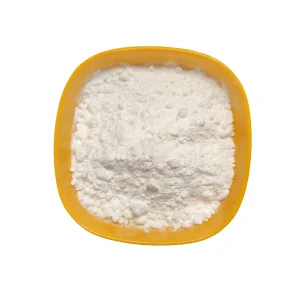Magnesiumoxid für landwirtschaftlichen Magnesiumdünger
Tibet Mag bietet Magnesiumoxid für den Einsatz in landwirtschaftlichen Anwendungen.
Tibet Mag ist ein Lieferant von hochreinem Magnesiumoxid in landwirtschaftlicher Qualität, das eine Quelle für Magnesium als Nährstoff darstellt. Magnesiumoxid hilft, Magnesiummangel in zahlreichen Böden und Nutzpflanzen zu beheben.
Magnesiumoxid als Pflanzennährstoffzusatz
Siebzehn Nährstoffe wurden als essentiell für das Pflanzenwachstum identifiziert. Ohne diese Nährstoffe können Pflanzen ihren Lebenszyklus nicht vollenden. Magnesium (Mg) gilt als „Makronährstoff“ – also als einer der 17 Nährstoffe, der in relativ großen Mengen benötigt wird.
Böden, denen wiederholt große Mengen Kalium zugeführt wurden, enthalten wenig Magnesium. Eine hohe Düngung mit Kalium- oder Ammoniumdüngern verstärkt häufig den Magnesiummangel. Eine hohe Kationenkonzentration beeinträchtigt die Magnesiumaufnahme. Diese Beeinträchtigung tritt im Allgemeinen nicht auf, wenn die Böden mehr austauschbares Magnesium als austauschbares Kalium enthalten.
Ein Symptom von Magnesiummangel sind niedrige Ernteerträge, da die Pflanzen weniger Hülsen mit weniger Samen bilden und dadurch weniger Korn erwirtschaften. Magnesiumoxid kann bei vielen verschiedenen Böden und Ernten zur Behebung von Magnesiummangel eingesetzt werden.
Bodenversauerung ist ein natürlicher Prozess, der durch normale Produktionspraktiken, insbesondere die Verwendung von Stickstoffdünger und Mist, verstärkt wird. Ein hoher Säuregehalt des Bodens kann das Wurzelwachstum verringern, die Nährstoffverfügbarkeit reduzieren und die Wirkung von Pflanzenschutzmitteln beeinflussen. Wasserlösliches Magnesium entsteht im Boden, wenn Magnesiumoxid durch die Einwirkung von Bodensäuren abgebaut wird, um verfügbares Magnesium bereitzustellen und die Säure zu neutralisieren.
Der Magnesiumoxidlieferant Tibet Mag bietet aufgrund seiner hohen Magnesiumkonzentration eine gute Nährstoffquelle zum Mischen von Mischdüngern.
Magnesium fertilizer Products
| Formulation | Description | Application |
| TIBETAMAG 58 | Granular, high purity | Crop and soil supplement |
| TIBETAMAG 200 | High purity, plant food | Liquid suspension fertilizer mixes |
Die Rolle von Magnesiumdünger im Pflanzenleben
Genau wie Menschen brauchen Pflanzen Nahrung zum Leben.
Sie produzieren Nahrung durch Photosynthese, ein Prozess, der Wasser, Kohlendioxid und Sonnenlicht erfordert.
Die Photosynthese findet in Chlorophyll statt, einem grünen Pigment, das Magnesium enthält. Wenn Pflanzen diesen Nährstoff nicht haben, können sie nicht die Nahrung produzieren, die sie zum Überleben brauchen.
Magnesiumdünger unterstützt außerdem folgende Funktionen:
- Zellteilung
- Proteinbildung
- Pflanzenatmung
- Enzymaktivierung
- Stoffwechsel
Ohne Magnesiumdünger können Pflanzen viele lebenswichtige Prozesse nicht durchführen.
Ein Mangel an Magnesiumdünger ist aufgrund des niedrigen Gehalts an austauschbarem Magnesium (ex-Mg) in sauren Böden ein häufig auftretender limitierender Faktor für die Ernteerträge, der sich negativ auf die Nachhaltigkeit der landwirtschaftlichen Entwicklung auswirkt.
Besonders interessante Fragen, die es zu beantworten gilt, sind die Auswirkungen der Magnesiumdüngung auf den Ernteertrag und die daraus resultierenden physiologischen Ergebnisse bei verschiedenen Nutzpflanzenarten sowie die agronomische Effizienz von Magnesiumdüngern unter verschiedenen Bodenbedingungen. Es wurde eine Metaanalyse mit 570 gepaarten Beobachtungen aus 99 Feldforschungsartikeln durchgeführt, um die Auswirkungen der Magnesiumdüngung auf die Pflanzenproduktion und die entsprechende agronomische Effizienz in verschiedenen Produktionssystemen unter verschiedenen Bodenbedingungen zu vergleichen.
Der Mittelwert aus Ertragssteigerung und agronomischer Effizienz durch Mg-Gabe betrug 8,5 % bzw. 34,4 kg kg-1, wenn alle Ertragsmessungen zusammengerechnet werden, unabhängig von Pflanzenart, Bodenbeschaffenheit und anderen Faktoren. Bei starkem Mg-Mangel (ex-Mg < 60 mg kg-1) stieg der Ertrag um bis zu 9,4 %, fast das Doppelte der Ertragssteigerung (4,9 %) in Böden mit mehr als 120 mg kg-1 ex-Mg. Die Wirkung der Mg-Düngung auf den Ertrag lag bei 11,3 %, wenn der pH-Wert des Bodens unter 6,5 lag. Die agronomische Effizienz von Magnesiumdüngern korrelierte negativ mit der Mg-Anwendungsmenge und betrug 38,3 kg kg-1 bei niedrigeren MgO-Mengen (0–50 kg ha-1) und 32,6 kg kg-1 bei höheren MgO-Mengen (50–100 kg ha-1). Es gab klare Wechselwirkungen zwischen dem Boden ohne Magnesium, dem pH-Wert sowie der Art und Menge der Magnesiumdünger in Bezug auf die Ertragssteigerung. Durch die Magnesiumergänzung nahm die Magnesiumansammlung im Blattgewebe im Durchschnitt um 34,3 % zu; und die Zuckerkonzentrationen in den essbaren Organen waren um 5,5 % höher als bei Behandlungen ohne Magnesiumergänzung. Unsere Analyse bestätigte, dass die Magnesiumdüngung die Pflanzenleistung steigert, indem sie den Ertrag verbessert oder zu günstigen physiologischen Ergebnissen führt, was großes Potenzial für ein integriertes Magnesiummanagement für höhere Ernteerträge und -qualität bietet.

